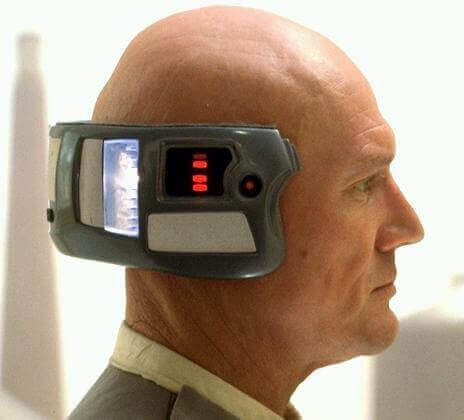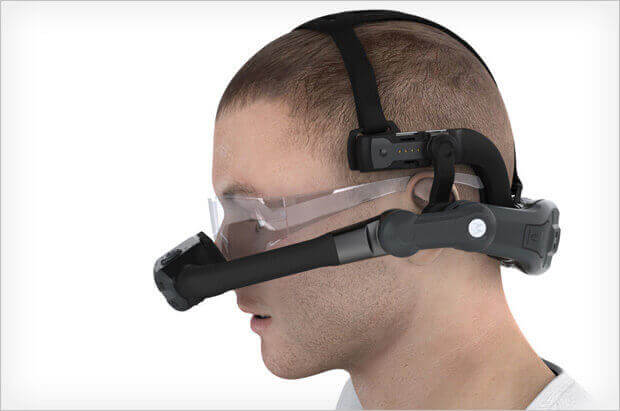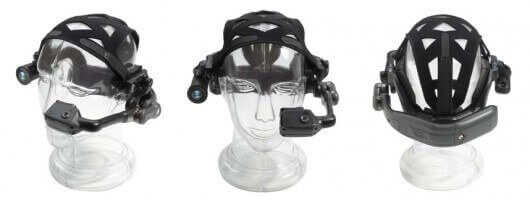Wearable Technologies: Finding A Line
One of the joys of being an analyst at RSR is the ability to draw your own “line “. There’s no corporate line to toe of any kind, so what I might think is cool, one of my partners might find an egregious violation of privacy. Or what one may think is a useless technology, another may think is the wave of the future. And not only is that okay, we’re quite vocal about it.
As it relates to the Wearable Tech Expo that I attended at NYU’s Kimmel Center in New York last week, much of what I saw was way over my line.
To start, a brief definition. We’re talking about ways technology can be applied to the human body that push well beyond what, until recently, anyone has thought possible. In many cases, much of the discussion at the conference was theoretical in nature, so in that way, a lot of it is still well beyond what’s currently possible at all. But overall, it was two full days of very smart – and very passionate – people discussing “wearable ” technologies that for the purposes of a general recap, I’d put into three categories: medical, consumer, and enterprise.
Medical
By far, the coolest demonstrations were those that provided aid to people who’ve been disabled. On day one, Dr. Robert Greenberg, CEO of Second Sight presented the ways his company is working to bring sight to both those who’ve lost theirs, and even more challenging: to those who’ve never had it. The company has had a 20 year journey to restoring basic sight (colors, shapes) to victims of macular generation: dozens of hospitals are now approved to perform a surgery using its implants. After a week of healing, when any risk of infection has been cleared, the implants are “turned on “. Although results have not been uniform, certain patients (with a lot of work on their part) have been able to achieve basic color vision and a resolution of 60 pixels. This is very crude vision, for certain, but as software improves and the necessary technology (microns) gets smaller in size, the software part of “talking to the retina ” will dramatically improve. This provides tremendous hope for other types of vision restoration, as all efforts so far have been for sight impairments where the optic nerve is still intact. So far this has completely precluded anyone who has lost vision due to glaucoma or trauma (for example, war veterans), and generating sight for those who’ve never had it is still a long ways off. But the science is progressing rapidly, and the videos he shared of a few patients seeing “blue ” or “a bowl ” for the first time in years made it absolutely worth the price of admission.
Consumer
And here’s where we start to find my line. We often use the term “a hammer looking for a nail ” here at RSR, and the majority of what I saw in the ways of consumer-grade wearable technologies is summarily categorized as such. Allow me to provide an example. On day two, Peter Travers, CEO of Vuzix presented “Amazing Advances in Wearable Tech and Augmented Reality. ” His company is working on a glasses-based augmented reality (AR) which is far beyond anything Google Glass sets out to accomplish. His goal is designer-quality frames that seamlessly integrate into daily life, with full panoramic view, and here’s how one of his partner-based videos played out:
- A single guy wakes up in his Manhattan skyrise apartment, puts his fashionable frames on;
- Looks out his window, it scans the city skyline, shows him the weather report and because it’s nice out, his car automatically retracts its convertible roof;
- His drive is chock full of constant information streaming at him about which lanes are available, which pedestrians to watch out for, where the police are, which turns not to take- we’re talking about absolute information overload – while driving;
- He arrives at a pool hall and slaps down a huge wad of cash. Every shot he makes goes in, because his glasses are providing him with the perfect angles and power required for guaranteed success;
- And now he approaches a stunning female bartender. Facial recognition pulls up her Facebook profile and personal blog, to which he nonchalantly says, “You seem like you might be a Gemini ” before he knows anything about her. She’s astounded, and when she replies, voice pattern software tells him she’s intrigued. He invites her over;
- The video concludes with her showing up at his apartment, and when his glasses have prompted him to suggest her favorite bottle of wine, she is smitten. Fade scene.
Have we found your line yet?
Enterprise
Consumers can choose to wear whatever they want. But by far, the most freaky of the technologies demonstrated were those designed to be worn in the workplace, where employees don’t have a choice. Nicole Tricoukes, whose title is Senior Maverick at Motorola Solutions Wearable Technology, was an absolute standout presenter on day one, a member of a panel about the future of enterprise technologies designed to be worn by the workforce. But despite her presence and knowledge, I’ve got to tell you that the device she was touting sent shivers up my spine. If you have a strong recollection of the characters in Star Wars, you’ll remember a bridge commander from Cloud City in The Empire Strikes Back with a computer wrapping around the back of his head like a horseshoe. His name was Lobot, and here’s an image to jog your memory:

Well, Motorola’s new device looks like this:


It’s got a camera on one side (fine) and a movable heads-up display eyepiece on the other (sure) that can be used to take video of what a worker – say on a drilling rig somewhere – is seeing. Then an expert who is not on site can provide instruction about which wire to cut, which pipe to weld, etc, and the information pops directly up in the worker’s field of view in the heads-up display. The worker is informed of what to do, all while maintaining the use of his hands (and the expert, of course, doesn’t have to be somewhere unpleasant, and gets to be where he’d rather be, in a cushy home office!)
The crowd had lots of questions, and a few were about safety, but all of them pertained to the safety of having a display in front of the eye. What I couldn’t help but wonder the entire time was, what about the personal computer strapped around the back of a worker’s skull for 8, 10, 12 hours at a time? Not only that, but it’s a computer in constant state of both transmission and reception. I got to sit the next day with Miss Tricoukes and asked my question. She assured me that all of the emissions move “outward ” from the unit, not in towards the brain. And that a fabric harness sits between the user’s head and the actual hardware, which will offer some protection from the non-cellular, BlueTooth and Wifi signals. This did not make me feel much better. With labor unions in as weakened a state as they are, there’s just something way too scary about where this stuff is headed. I have both friends and family members who work manual labor jobs, and with mouths to feed, they’re not going to risk putting up a fuss. In this job market, the day their boss asks them to strap an emitting computer to their head – they’re just going to do it. And to keep it sci-fi, in the words of William Shatner, I can’t get behind that.
It won’t take long for this debate to come to retail. In fact, many warehouses will soon be deploying pick/pack AR solutions that make use of glass and headset devices. The question is, will anyone stand up for them? Or will this be a deploy-now, discover-the-harm later scenario?
I’d love to hear your thoughts on these issues. But please understand if it takes a little bit to get back to you: after being in that room for a couple of days, I may just want to shut my phone off for a little while.
